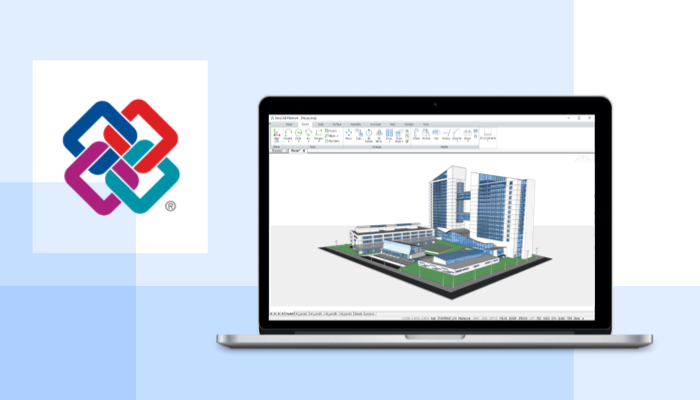BIM Data Exchange via IFC
 Other News
Other News Subscribe to newsletter
Subscribe to newsletter
| 3 Jul 2018 |
Every computer program needs a place to store the data you create with it. The native file format of any program is optimized for program speed and read/write performance. When a user of a program wants to share their data with others, they generally send a copy of the native file. This a good way to collaborate – unless the receiver of the file doesn’t use the same software.
In the business software world, interoperability is important enough that vendors work hard to read and write their competitor’s file formats. In the CAD world, the .dwg file is king. In the beginning, .dwg was a proprietary format. Thanks to the work of the Open Design Alliance, there’s a second provider of access to the data stored inside .dwg files. CAD users can now enjoy 100% compatibility between CAD software products that use the .dwg file format (like BricsCAD).
The situation with BIM is a bit different. Every BIM system stores its data in files, too. AutodeskⓇ RevitⓇ stores data in proprietary formats named .rvt and .rfa. The data structure of these files are private to Autodesk, and that structure is very complex. There is little chance of a third party accurately reading and writing Revit files.
So let’s say that you use Revit. What happens if your structural engineer wants to use a different design application, one that doesn’t work inside of Revit? How will she access your proprietary BIM and add her discipline-specific work? There is a solution to this scenario.
IFC: a solution to proprietary data formats
The Industry Foundation Classes (IFC) data model is designed to describe building and construction industry information. IFC is a platform neutral data exchange format. It is managed by a third party – BuildingSmart International.
The goal of IFC is to provide interoperability between different BIM software platforms.
It is about the sharing of information between project team members and across the software platforms that they use. This includes applications used for building design, construction, procurement, maintenance, and operations – covering the whole building life-cycle.
How does IFC relate to openBIM?
These two initiatives work together quite well, thank you. openBIM is an initiative of buildingSMART International. They are working toward a universal, open data model. The openBIM project supports a transparent, platform-agnostic workflow. It’s designed to let everyone involved in a design and construction project participate in the workflow, regardless of the software tools they use.
The buildingSMART Implementation Support Group is responsible for supporting the implementation and certification of buildingSMART’s standards. As a fervent supporter of .dwg and the Open Design Alliance, Bricsys is a strong believer in the “open data” principle. We’re applying that same mindset to our BIM products, also.
We believe that it is no longer acceptable to lock-in users to proprietary file formats.
Software providers need to collaborate and must understand that their users need to collaborate, too. Data must be open to all participants in a project. Bricsys considers buildingSmart as the center point of this process. We will actively contribute, wherever possible, to propagate the vision and values of buildingSMART. It’s the right thing to do for our users, and for the greater community.
Why is this important for BricsCAD BIM?
It’s all about creating enduring project data. We’ve completed the IFC Certification 2.0 procedure with BricsCAD BIM. This certification required us to pass rigorous tests, focused on consistent and reliable interoperability across all the IFC Certified BIM systems.
BricsCAD BIM is certified for IFC2x3 Coordination View 2.0.
This “CV” allows sharing of building information models between the major disciplines of architecture, structural engineering, and building services (mechanical, electrical and plumbing). It’s also the most widely implemented and used of the IFC data schemes. It supports spatial structure, building and building service elements.
It also includes both parametric and non-parametric shapes, property sets, material definitions and other important metadata.
What’s the bottom line?
Through our support of IFC and openBIM, you can rest assured that your investment in the BricsCAD BIM solution won’t lock you into proprietary formats. It will allow you to work fluidly with sub-contractors, construction teams, and building owners. There’s a new way to do BIM today, and it’s from Bricsys. Come and find out more.





